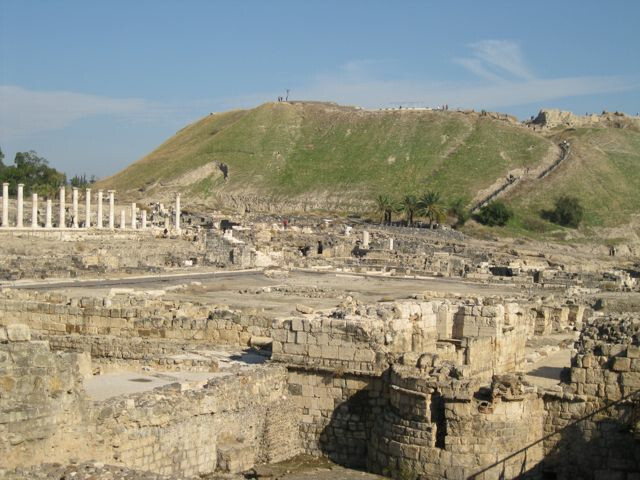Decapolis: No Separatist
Matthew 4:23-25
And he went throughout all Galilee, teaching in their synagogues and proclaiming the gospel of the kingdom and healing every disease and every affliction among the people. So his fame spread throughout all Syria, and they brought him all the sick, those afflicted with various diseases and pains, those oppressed by demons, those having seizures, and paralytics, and he healed them. And great crowds followed him from Galilee and the Decapolis, and from Jerusalem and Judea, and from beyond the Jordan.
In Jesus’ day, there were ten Roman cities, mostly Gentile, to the South and East of the Sea of Galilee. Matthew refers to them by the common name “Decapolis” in (4:25). On one trip to Israel, early in our tour we visited one of those cities, Scythopolis. Because it was destroyed by an earthquake in A.D. 749, when it was excavated, the columns and stone portions of the city could be reassembled like a puzzle. It was fascinating to stand on a high point and get a vision of what a Roman city would have been like. The Romans were among the first to build “planned communities,” so their cities are rather predictable: a main street lined with columns, a theatre, a temple, an amphitheater, a hippodrome, etc.
Jackie and I were particularly intrigued because Scythopolis was not even a stop when we had visited twenty years ago. When we asked why, our guide replied, “Because twenty years ago, it was covered with forty feet of dirt!” Pointing to a nearby cliff topped with eucalyptus trees, he showed us where the earth’s level would have been when we last toured. Perpetual archaeological exploration is what makes Israel a place to revisit with new interest.

King David conquered Scythopolis, and King Solomon made it a key center of his administration. However, Beth She’an is most infamous in Israel’s history as the place where the bodies of Saul and his three sons were hung on the city wall in shame (1 Sa. 31:11). David lamented, “Saul and Jonathan, beloved and lovely! In life and in death they were not divided; they were swifter than eagles; they were stronger than lions” (2 Sa. 1:23).
Scythopolis was a city teeming with commerce and art. Jewish sages used to say, “If the Garden of Eden was in Israel, its gate would be at Beth She’an [the city’s ancient name].” It was also wealthy and boasted the latest “technology,” like public restrooms and water heaters!
Scythopolis represents the kind of cities Jesus visited and the kind of citizens to whom Jesus was preaching. These would have been sophisticated pagans, compromising Jews, homosexuals, pedophiles, sponsors of gladiators, gluttons, drunks (the city was named after the goddess of wine), wife swappers, and numerous other representatives of “worldly” people. These are the ones Jesus went after, and these are the kinds who were attracted to the Son of God who came to “tabernacle” among them.
There are at least two things we can take away from this. For one, the fact that Jesus went after people like the citizens of Scythopolis proves to us that Jesus pursues us as well. While we may not engage in sinful behavior easily visible to others, we all have sinful hearts. So all are in equal need of the pursuing love of Jesus. When we are weighed down by our sin, we may remember that Jesus lovingly pursued us while we were still sinners (Rom. 5:8). No one is outside of the reach of the Savior who came to earth to save.
Secondly, the Bible teaches we are called to be “little Christs” (2 Cor. 5). While we must maintain our commitment to follow our Father’s commandments as Christ did, we must also walk among those with whom we disagree and live differently, just as Christ did. We must, because kindness, not judgment, draws sinners to repentance (Rom 2:4).
